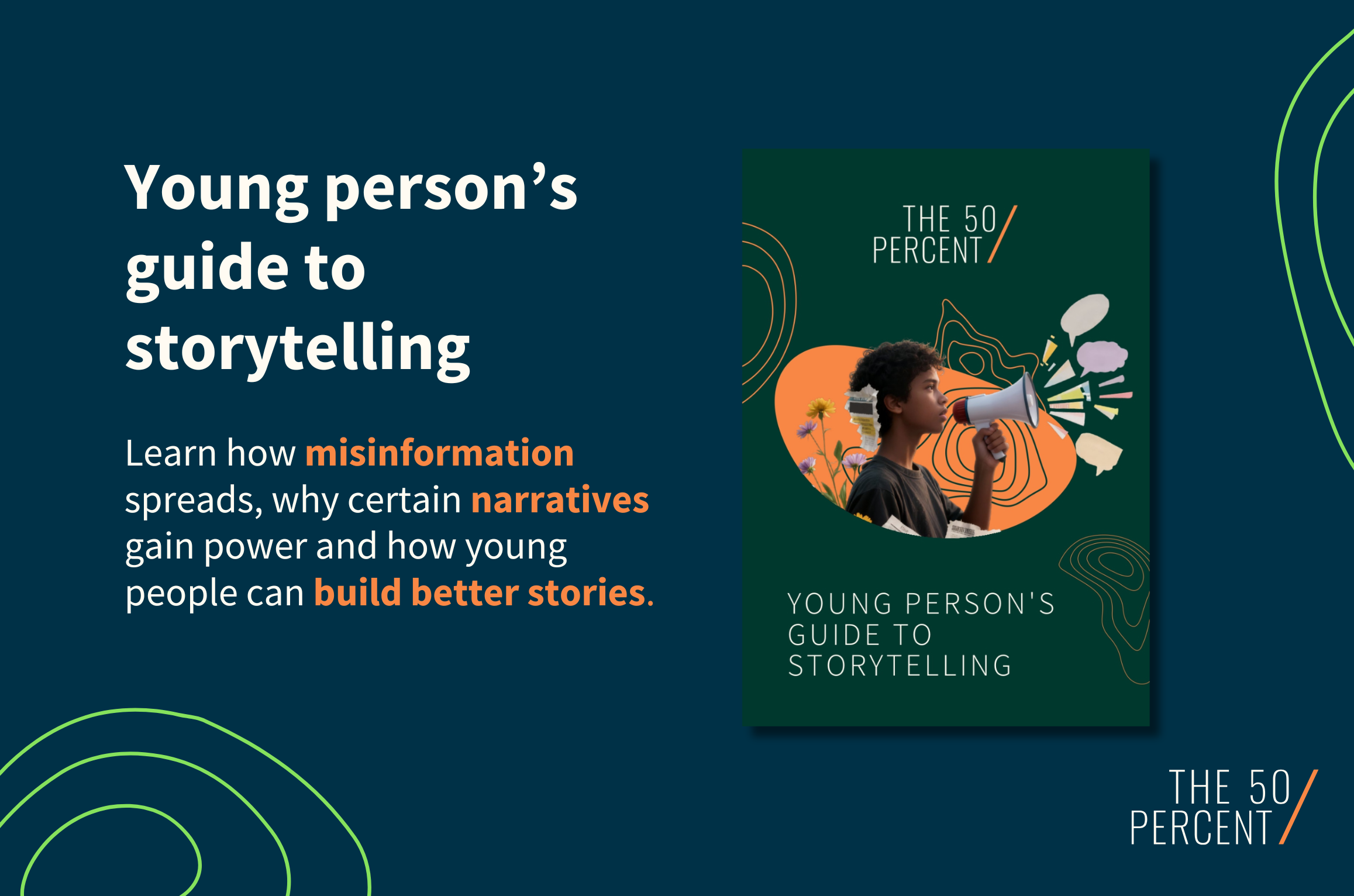24 November 2025
Introducing the young person’s guide to storytelling


Storytelling has shaped humanity since the dawn of time, and today it may matter more than ever. For centuries, humans have used stories to explain the world, unite communities and imagine futures that do not yet exist. Yet in the digital age, storytelling has also become a battleground: narratives spread at unprecedented speed, influencing what people believe, how they act and whom they trust.
The 50 Percent has launched the ‘Young person’s guide to storytelling’, a new resource created to help young people understand the power of stories in shaping society and how to use that power responsibly.
The guide offers a clear, accessible roadmap for understanding how stories shape public life and how young people can use storytelling to strengthen, rather than destabilise, democratic culture.
What the guide covers
Drawing on research, real-world examples and youth perspectives, the guide explores:
1. The power of storytelling
The guide shows how stories have always fuelled collective imagination, from early myths to modern media, and how this ability to craft meaning has given humans an evolutionary advantage. Storytelling helps people collaborate, organise, learn and solve problems.
2. The dangers of storytelling
Stories can mislead, exclude or cause harm. The guide explains how narratives can oversimplify complex realities, manipulate emotions or create “heroes vs villains” frames that polarise communities.
3. Misinformation, disinformation and democracy
The guide outlines how false or misleading stories spread online, often faster than accurate information. Algorithms amplify sensational content, social media accelerates emotional reactions and political actors weaponise narratives for influence.
It also highlights the consequences: declining trust in institutions, rising cynicism and young people increasingly unsure whether the information they see is real.
4. Why young people are especially vulnerable
Despite being highly connected, research shows Gen Z is among the groups most susceptible to misinformation. Hyperconnected but overwhelmed, young people face a media environment that blurs fact and fiction, making it difficult to assess credibility, especially on platforms designed for speed, not accuracy.
5. How young people can respond
The guide offers tools for spotting false narratives, understanding emotional manipulation and creating counter-narratives grounded in empathy, shared values and community connection.
It encourages young people not only to be critical consumers of media but also active storytellers who use their voice responsibly and creatively to shape a more hopeful future.
A call to action
At a time when misinformation spreads faster than ever, and when many feel discouraged or excluded from political processes, the guide offers a refreshing alternative: rebuild trust, reconnect communities and tell better, braver, more human stories.
As the authors write, storytelling is not just a tool… it is a responsibility. And when young people take the lead, it becomes a force for collective healing and change.
The ‘Young person’s guide to storytelling’ is now available for download: here.

